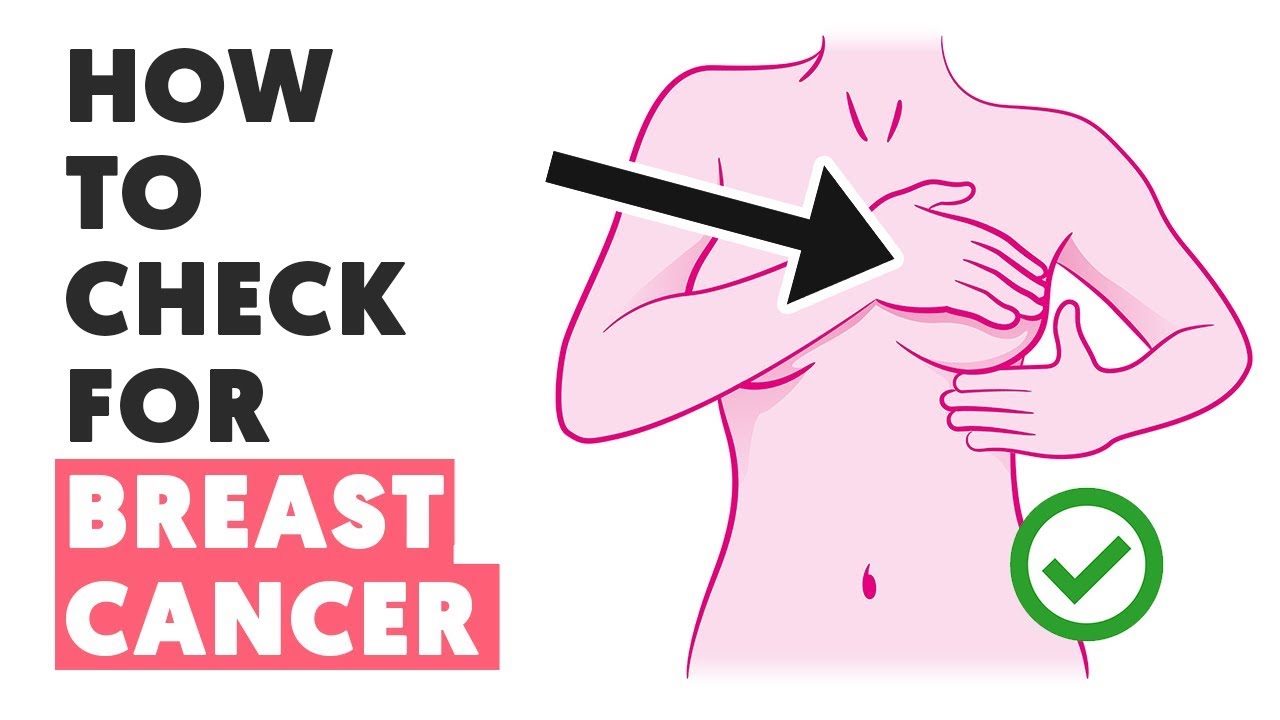4 Steps to Checking For Breast Cancer Symptoms
Trying to figure out how to detect breast cancer early?
Well, besides regular visits to the doctor, you can also give yourself to self-examination.
The thing is, the simple act of examining your breast can increase your chances of detecting cancer early, and that’s huge.
As we know, early-stage cancer is more likely to respond to treatment compared to one that has grown deeply in surrounding tissues.
Note: you may not be able to find all types of cancer through Breast self-exam, but it’s still crucial to take the step and see how it works for you.
Let’s get started!
Step 1: For starters, stand in front of the mirror and of course, take a good look at your breasts.
Be sure to keep your shoulders straight and place your arms on your hips.
Things to look for:
• Normal breasts; usual size, shape, and color
• Evenly shaped breasts that are free of visible distortion or swelling
Signs that you need to see a doctor:
• An inverted nipple or one that has changed position
• Bulging or puckering of the skin
• Soreness, redness, swelling or rash.
Step 2: At this point, you’ll want to raise your arms and of course, look for the same changes
Step 3: While looking in the mirror, check for any signs of fluid (milky, watery, yellowish or even blood) coming out of either one or both of the nipples
Step 4: Now, lie down on your back and use your right hand to feel your left breast and of course, your left hand to feel your right breast.
Using the first few finger pads of your hand, touch your breasts firmly (be gentle) while keeping the fingers flat and together.
While using a circular motion (this should be about the size of a quarter), cover the whole breast right from top to bottom, and side to side.
In essence, start from your collarbone to the top of your abdomen, and from your armpit to your cleavage.
Just stick to a pattern to be sure that you cover the entire breast.
Now, start at the nipple and continue to move in larger and larger circles until you touch the outer edge of your breast.
What’s more, you can choose to move your fingers up and down vertically, in rows.
Do you prefer the up-and-down approach? If yes, you won’t be wrong to feel just about every tissue right from the front to the back of your breasts.
For the most part;
• Use light pressure for the skin and tissue just beneath
• Use medium pressure to feel the tissue in the middle of your breast
• Then use firm pressure for the deep tissue in the back. At this point, you should be able to feel down to your rib cage.
And that’s it! Now you can check for breast cancer and of course, increase your chances of kicking it out of your life for good. Stay healthy!
▶ Subscribe to the channel! – https://goo.gl/nJ8d6r
Royalty free Pictures from
www.pixabay.com
www.pexels.com
Royalty Free Music from
Audio Library – No Copyright Music



![[ID: Hx_A0iLhdr8] Youtube Automatic](https://bizimtube.com/wp-content/uploads/2021/03/id-hxa0ilhdr8-youtube-automatic-236x133.jpg)
![[ID: lp7w0UmpuIs] Youtube Automatic](https://bizimtube.com/wp-content/uploads/2021/03/id-lp7w0umpuis-youtube-automatic-236x133.jpg)
![[ID: s2-7T1TH-lY] Youtube Automatic](https://bizimtube.com/wp-content/uploads/2021/03/id-s2-7t1th-ly-youtube-automatic-236x133.jpg)
![[ID: b_lakC9M4UQ] Youtube Automatic](https://bizimtube.com/wp-content/uploads/2021/03/id-blakc9m4uq-youtube-automatic-236x133.jpg)
![[ID: r44yl6nPONs] Youtube Automatic](https://bizimtube.com/wp-content/uploads/2021/03/id-r44yl6npons-youtube-automatic-236x133.jpg)
![[ID: pAwto1YQjA8] Youtube Automatic](https://bizimtube.com/wp-content/uploads/2021/03/id-pawto1yqja8-youtube-automatic-236x133.jpg)
![[ID: XETG8azHiv4] Youtube Automatic](https://bizimtube.com/wp-content/uploads/2021/03/id-xetg8azhiv4-youtube-automatic-236x133.jpg)
![[ID: f3G_-S_2HUk] Youtube Automatic](https://bizimtube.com/wp-content/uploads/2021/03/id-f3g-s2huk-youtube-automatic-236x133.jpg)
![[ID: G8oWns54snA] Youtube Automatic](https://bizimtube.com/wp-content/uploads/2021/03/id-g8owns54sna-youtube-automatic-236x133.jpg)
![[ID: s0lIFXhu6aw] Youtube Automatic](https://bizimtube.com/wp-content/uploads/2021/03/id-s0lifxhu6aw-youtube-automatic-236x133.jpg)
![[ID: 4UTd2Ev8eYg] Youtube Automatic](https://bizimtube.com/wp-content/uploads/2021/03/id-4utd2ev8eyg-youtube-automatic-236x133.jpg)
![[ID: RKBGBjVJBxQ] Youtube Automatic](https://bizimtube.com/wp-content/uploads/2021/03/id-rkbgbjvjbxq-youtube-automatic-236x133.jpg)